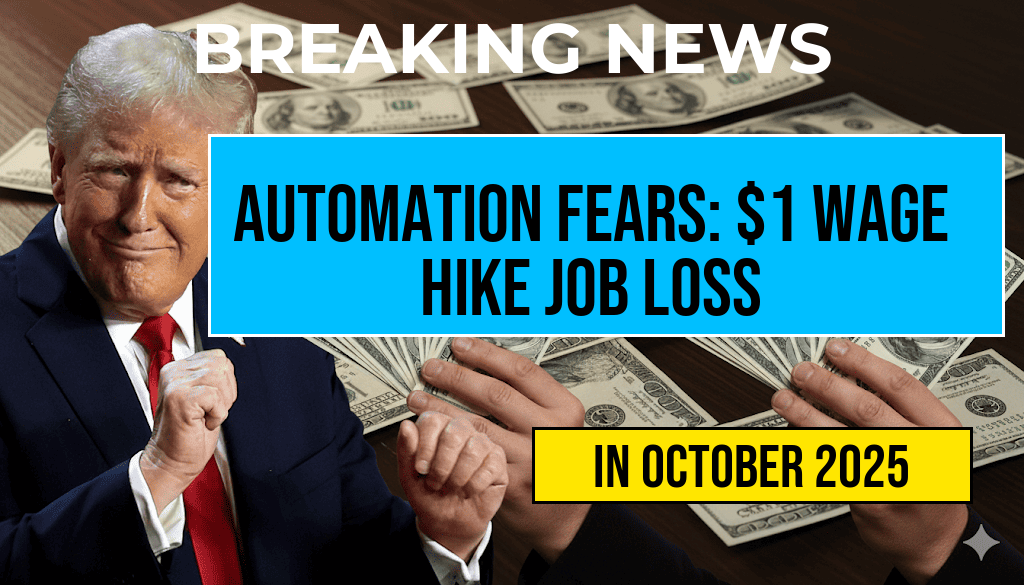The recent proposal to increase the minimum wage by $1 nationwide has ignited a debate among small business owners, economists, and policymakers about the potential economic ripple effects. While advocates argue that such an increment can boost workers’ purchasing power and reduce income inequality, critics warn it could impose financial strains on small enterprises, possibly leading to layoffs or hiring freezes. This concern is especially acute amid ongoing inflationary pressures and rising operational costs. Small businesses, which constitute approximately 99.9% of U.S. firms according to the Small Business Administration, are often more vulnerable to wage increases than larger corporations with greater resources. As discussions continue, stakeholders are weighing whether a modest wage hike could inadvertently force some small firms to reduce staffing levels, potentially impacting local economies and employment rates.
Economic Implications of a $1 Wage Increase
Potential Benefits for Workers and the Economy
- Increased Consumer Spending: A higher minimum wage can enhance workers’ disposable income, leading to increased spending that stimulates local economies.
- Reduced Income Inequality: Incremental raises can narrow wage gaps, particularly benefiting low-income earners who are more likely to spend additional income immediately.
- Improved Employee Retention: Even small wage boosts may reduce turnover, saving businesses costs associated with recruiting and training new staff.
Challenges Faced by Small Businesses
- Rising Operational Costs: For small firms operating on tight margins, an extra dollar per hour can significantly impact bottom lines.
- Limited Buffer for Wage Adjustments: Unlike larger corporations, many small businesses lack extensive financial reserves to absorb wage increases without affecting other expenses.
- Risk of Workforce Reductions: To maintain profitability, some may resort to layoffs or reduced hours, particularly in sectors with low profit margins such as retail, hospitality, and food services.
Industry Perspectives and Regional Variations
Small Business Responses
| Business Type | Expected Impact | Adaptation Strategies |
|---|---|---|
| Retail Stores | Concern over increased labor costs; potential for layoffs | Automating processes, reducing hours |
| Food and Beverage | Balancing wage hikes with menu pricing | Menu adjustments, staff restructuring |
| Service Providers | Variable impact based on profit margins | Shift to more efficient scheduling |
Regional Cost of Living and Wage Impact
The effect of a $1 wage increase is expected to vary significantly based on regional economic conditions. In high-cost urban areas like New York City and San Francisco, where minimum wages are already above the federal level, small businesses report marginal impacts, emphasizing labor shortages rather than layoff concerns. Conversely, in regions with lower living costs and tighter profit margins, the added expense may prompt more cautious staffing decisions.
Policy Considerations and Economic Research
Expert Opinions
Economists are divided on the long-term effects of modest wage increases for small businesses. Some argue that temporary challenges can be offset by increased consumer spending and productivity, while others caution that the cumulative effect could threaten the sustainability of small enterprises. A 2020 study published in the National Bureau of Economic Research indicates that small firms are more sensitive to wage changes than larger corporations, especially when operating on thin profit margins.
Policy Strategies for Support
- Targeted Subsidies: Offering grants or tax credits to small businesses could help offset increased wages.
- Gradual Implementation: Phasing wage increases over time allows businesses to adjust without abrupt financial shocks.
- Enhanced Workforce Development: Investing in employee training can improve productivity, helping small firms absorb wage hikes more comfortably.
Looking Ahead
The debate over a $1 minimum wage increase encapsulates broader questions about balancing fair wages with economic viability for small businesses. While the immediate benefits to workers and local economies are evident, the potential for increased operational costs poses real challenges for small employers. Policymakers, business leaders, and advocates continue to examine data and real-world experiences to craft strategies that support both workforce wellbeing and small business sustainability. Ultimately, nuanced approaches that consider regional differences and industry specifics may determine how effectively such wage policies can be implemented without unintended employment consequences.
Frequently Asked Questions
Will the $1 wage increase significantly impact small business employment?
Many small businesses are concerned that a $1 wage increase could lead to higher labor costs, potentially prompting layoffs or reduced hiring to maintain profitability.
How might automation be affected by the wage increase?
The wage increase could incentivize small businesses to adopt automation technologies to offset higher personnel expenses, potentially replacing some human workers.
Are small businesses prepared to implement automation in response to wage hikes?
Preparation varies among small businesses; while some may have the resources to adopt automation solutions, others might struggle due to limited budgets or technical expertise.
What are the potential benefits of automation for small businesses facing wage increases?
Automation can help reduce labor costs, increase efficiency, and maintain service quality, potentially allowing small businesses to adapt without resorting to layoffs.
Does this wage increase disproportionately impact small businesses compared to larger companies?
Yes, small businesses often have less flexibility to absorb wage hikes and may be more likely to consider automation or layoffs, whereas larger companies might better distribute increased costs across a broader workforce.






